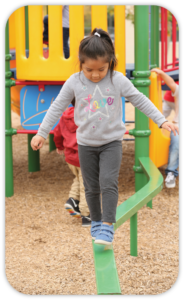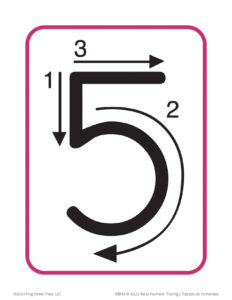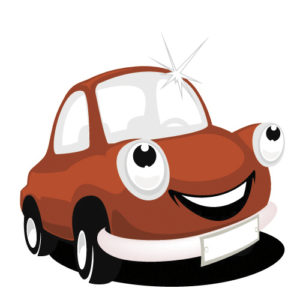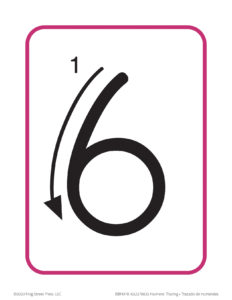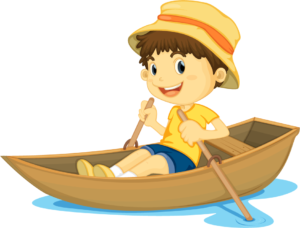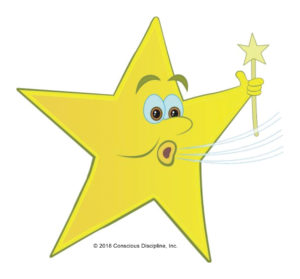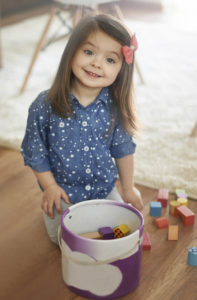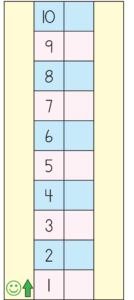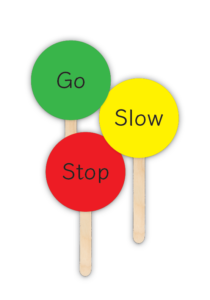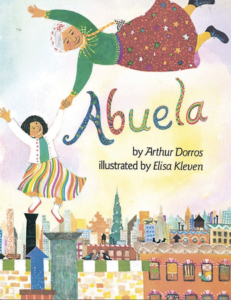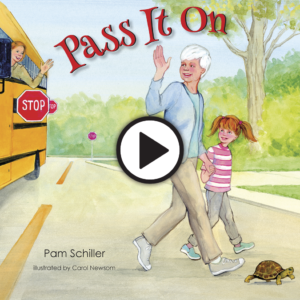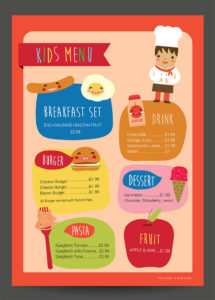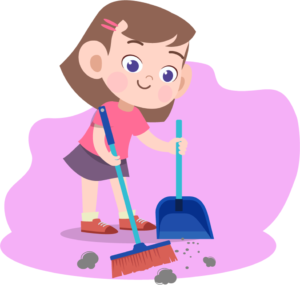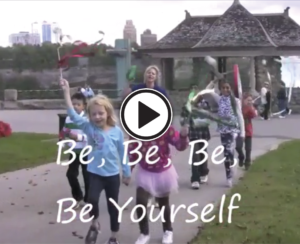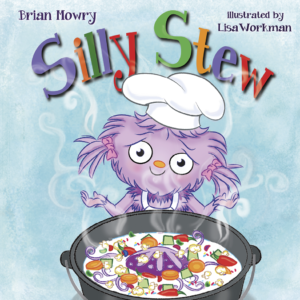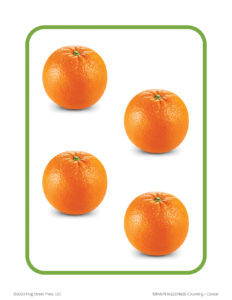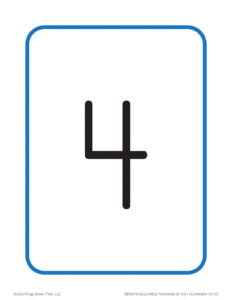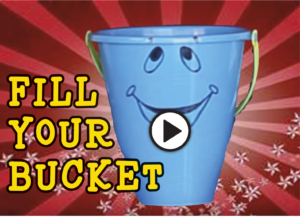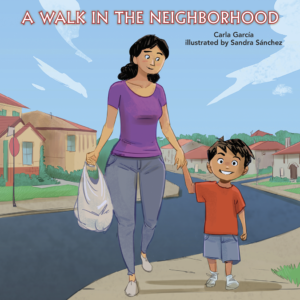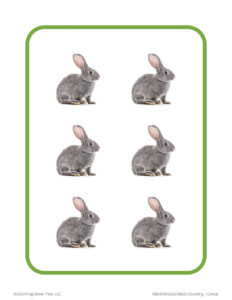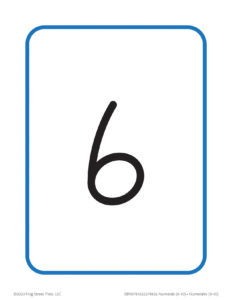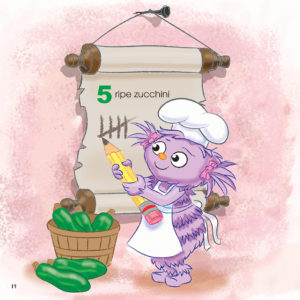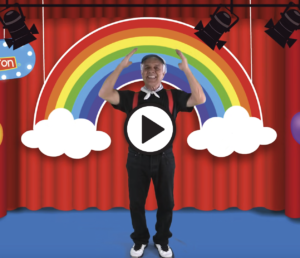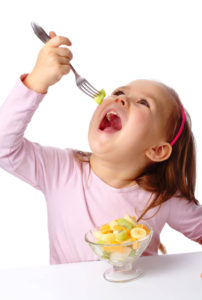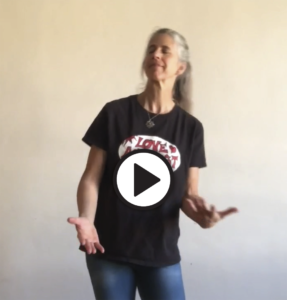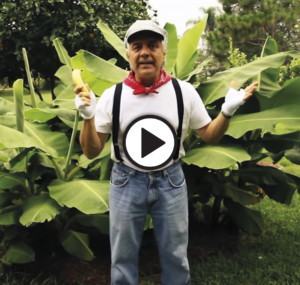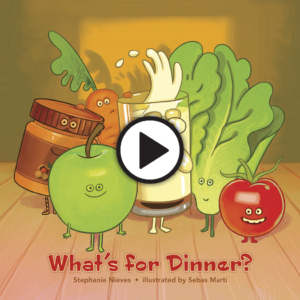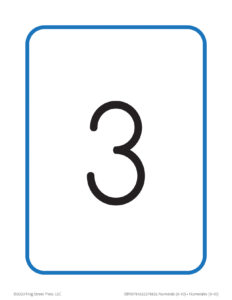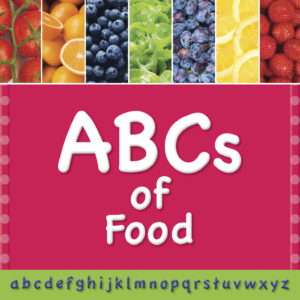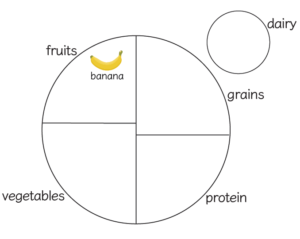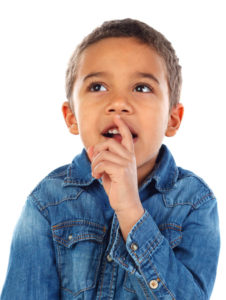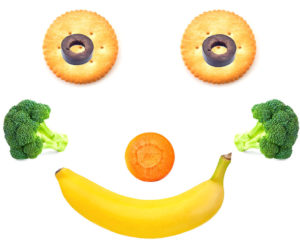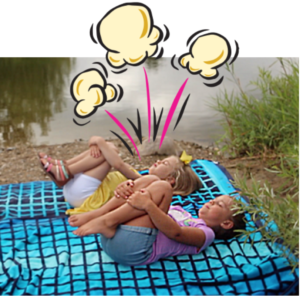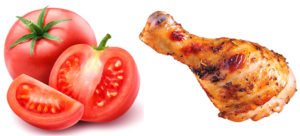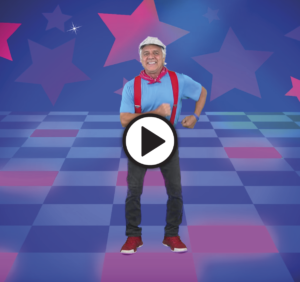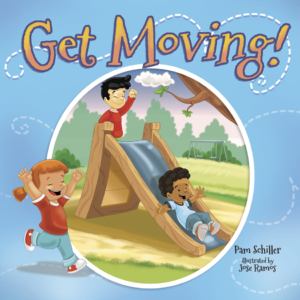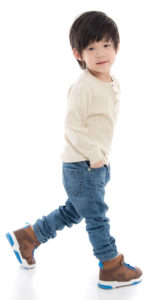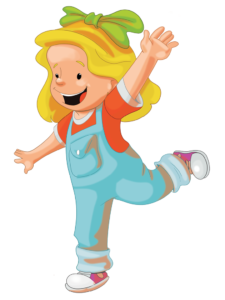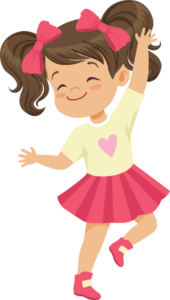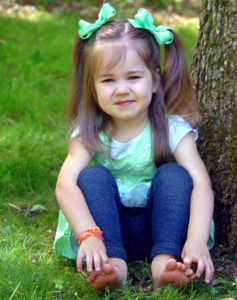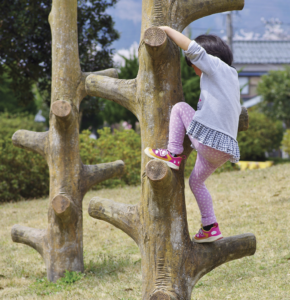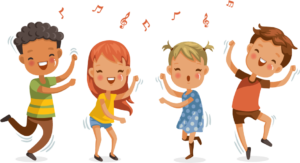Safe, Healthy, Helpful Me
Week 1: Community Workers
This week, your child will learn about the people in your neighborhood and community that help you stay safe and healthy.
Word of the Week: community
Before You Begin
Watch this video to better understand the concepts your child will be learning this week. This is not a video you will watch with your child. This is just for you!

Books to Read
- Abuela eBook
- Workers in My Community eBook
- Workers in My Community Read-Aloud video
Supplies to Gather
- ball
- calendar
- candle
- clear glass cup
- clothespin
- construction paper
- cookie ingredients
- craft sticks or straws
- empty paper towel tube
- journal
- markers and crayons
- notecards or folded paper
- paper
- paper bag or bowl
- paper towels
- pencils
- penny
- photos and drawings of your helpful child
- plastic cups
- play dough, yarn, shoestring
- rock
- stick-on notes
- toothbrush
Drain
Teaching a variety of calming strategies gives your child the opportunity to learn different ways to take control of emotions and actions. Practicing the strategies will help your child decide which one works best at different times. Click image to see directions for the new calming strategy Drain.
Daily Message
Teachers work in the school community.
- Say the sentence and ask your child to repeat it.
- Say the word com-mu-ni-ty clapping once for each syllable. Have your child repeat and clap with you.
- Repeat with the word work.
- Ask: Why did we clap one time for work and four times for community? The word community is a longer word with more syllables.
Storytime
Watch the read-aloud video Workers in My Community with your child. Today’s book is an information (nonfiction) book. This means it has true facts instead of make-believe story. Encourage your child to answers the teacher’s questions while listening to her read the book aloud.
Numerals 0-5
This week your child will look for and name numerals in your home and community. Numerals are symbols, just like letters. We use them to communicate information. Write the numeral 5. Ask your child to name the numeral and trace its shape with a finger. Repeat with numerals 0-4. Click image to see numeral writing directions for 0-5.
Knock It Over
Show your child how to stack six red, plastic cups into a pyramid shape. Invite your child to roll a ball to knock them down. After each roll, talk about how many cups were knocked down and how many remain standing. Have your child count to be sure there are six cups each time she knocks them down and restacks them.
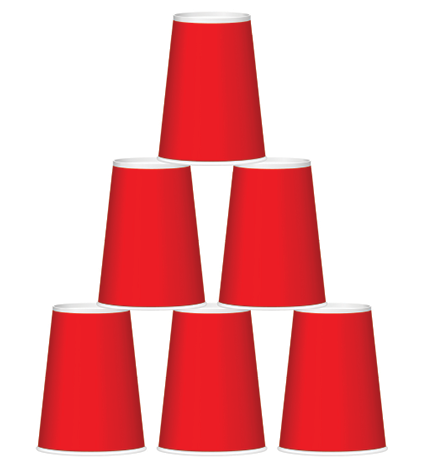
Cleaning Tools
Have your child find two small rocks from outdoors. Invite your child to use soapy water with an old toothbrush to clean the dirt off one rock. Then clean the other rock with a paper towel. Compare the results. Ask: Did the toothbrush or the paper towel do a better job removing the dirt? Why do you think so?
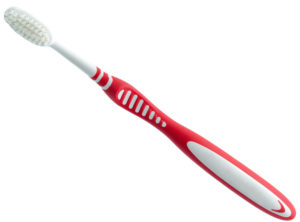
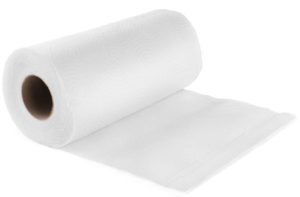
License Plates
Discuss with your child how police officers use license plate numbers to identify cars that belong to people. Use a notepad to help your child write down the license plate number on your car or a neighbor’s car. Read the numerals and letters together. Click image for more about license plates.
Daily Message
A delivery worker carries
heavy boxes.
- Say the sentence and ask your child to repeat it.
- Say the word de-liv-er-y clapping once for each syllable. Have your child repeat the word and clap with you.
- Repeat with the word heav-y.
- Ask: Why did we clap four times for delivery and two times for heavy? Confirm that the word delivery is longer with more syllables.
Compound Words
Teach your child the Compound Word Chant. Practice making compound words using hand motions. Hold out your right hand and say mail. Hold out your left hand and say box. Slide your hands next to each other and say mailbox. Have your child copy the motions. Repeat using sidewalk and barcode. Click image for chant.
Buckle Up
Teach your child songs that signal it’s time for a certain activity or routine. For example, you may sing a certain song every day as you clean up. Today, teach your child “Buckle Up” to reinforce the important routine of always wearing a seatbelt in the car. Then, sing the song each time you get in the car. Click image for lyrics.
Storytime
Look at the cover of Workers in My Community. Turn to the table of contents. Remind your child that a table of contents tells us where we can find information in a book. Point to the topic “Community Workers Who Keep Us Healthy.” Turn to pages 6-7. Read the pages together. Have your child tell about a visit to a doctor or dentist.
8, 6, 7, 9
Using a marker, write the numerals 8, 6, 7, 9 on paper. Have your child point to and name the numerals she knows. Help your child with those she doesn’t know. Trace each numeral with your finger. Encourage your child to trace and then write the numerals. Click image for numeral writing directions.
Hide a Penny
Have your child close her eyes. Arrange five numbered cups in numerical order (left to right). Hide a penny or small block under one of the cups. Tell your child to open her eyes and guess which cup is hiding the penny. Provide clues such as: The penny is not under the second cup. The penny is hiding between the third and fifth cup.

A Numbered List
Write the numerals 1-5 on the left side of a sheet of paper. Have your child place five different colored markers into a paper bag. As your child removes one marker at a time, use it to write the name of the color next to a numeral beginning with 1. The finished list will show the order each marker was removed from the bag.
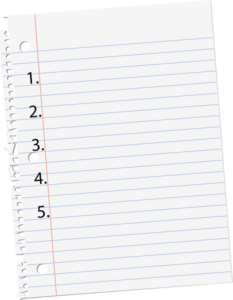
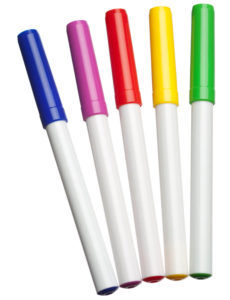
Left and Right
Putting on shoes is a great way to practice left and right. Draw half of a happy face inside each shoe. Have your child place the shoes side by side to complete the happy face smile puzzle before putting the shoes on. If the smile looks correct, the right and left shoe are in the correct position. Say: Left foot, left shoe as your child puts on the left shoe. Right foot, right shoe.
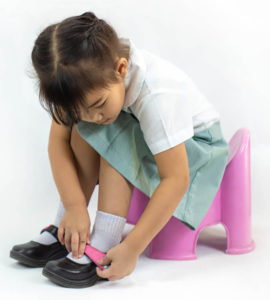
Row Your Boat
Teach your child the partner game “Row, Row, Row, Your Boat.” You and your child can work as a pair or your child can work with a sibling. One partner will be the boat and the other will be the passenger. Both partners have a job of the keeping the other safe. Click image for directions.
Daily Message
X-rays show the inside of a body.
- Say the sentence and ask your child to repeat it.
- Say the word x-ray clapping once for each syllable. Have your child say the word and clap with you.
- Repeat with the word in-side.
- Write the sentence as your child recalls each word. Write an X.
- Have your child circle X in the sentence.
Writing Together
Talk with your child about favorite ways to travel (car, bus, airplane, train, bicycle, boat). List your ideas on paper. Have your child ask family members to “vote” for their favorite by writing their name beside that type of travel on the list. Look at the finished list. Talk about which type of travel is the favorite of the most family members.
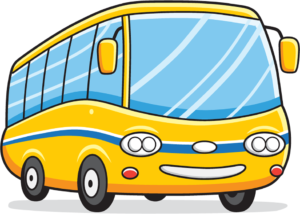
Storytime
Show Workers in My Community. Turn to the table of contents. Say: I’d like to read about Workers Who Protect Us. Explain that protect means to keep safe. Turn to pages 12-13. Read the pages together. Teach your child how to dial 911 to report fires or ask for help from a police officer.
Match Numerals
Write one numeral (1-10) on separate small paper squares. Place the squares in a bowl or bag. Have your child choose a square, read the numeral, and put a clothespin on the matching numeral on a ruler. Each time your child reads a numeral, have her move the clothespin on the ruler. Ask: Will you go left or right to the new numeral? Count the steps.

How Many Digits?
Have your child point to and name the numerals 1-9 on a calendar. Say: These numerals have one digit. There is just one numeral in each. Point to the numeral 10. Say: This numeral has two digits. Together, notice how all the other numerals have two digits. Search for other numerals around the house. Ask: Do the numerals have one, two, or more digits?
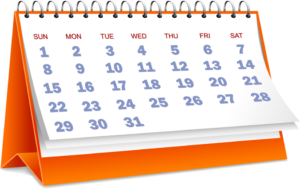
What’s My Address?
Ask your child to go with you to get the mail in your mailbox. Point out the numerals on the mailbox and explain that they help the mail carrier know which house (or apartment) belongs to you. Help your child read the numerals and check that they match the address written on a piece of mail. Read and compare the numerals on neighbors’ mailboxes.
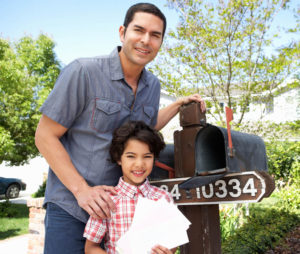
Healthy Habits
Remind your child that this week you are learning about ways to be safe and healthy and the community workers who help keep you safe and healthy. Say: Calming strategies are healthy habits. Click image to review all four calming strategies. Have your child choose a strategy and practice it.
Daily Message
Firefighters teach children safety rules.
- Say the sentence and ask your child to repeat it.
- Say the word safe-ty clapping once for each syllable. Have your child repeat the word and clap with you.
- Repeat with the word teach.
- Ask: How many syllables in children? Help your child clap chil-dren: two syllables.
Thank-You Note
Your child has been learning about workers that keep us safe and healthy. Ask: What are some ways we can let these workers know we appreciate what they do? Ask your child for ideas. Have your child draw or write a thank-you note on a note card or folded paper. Remind your child to sign the note.
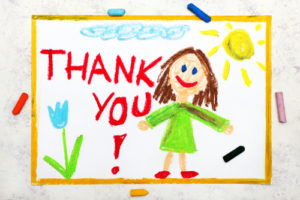
Storytime
Watch the read-aloud video Workers in My Community with your child. Ask: How do all the community workers we read about this week work together? How do they help each other? Which community worker would you like to be? Why?
Ten Items or Less
When you go to the express checkout line at the grocery store, have your child help you count the items in your basket to be sure there are ten or fewer. Count together. Ask: Is __________ less than ten? Why is it important to follow the rule? How does following the rule show kindness?

Ways to Be Helpful
Arrange an area on your refrigerator or a memo board to post photos and drawings of your child. Explain that you will be taking photos of your child being helpful. Your child can also draw pictures of jobs. Post the photos and drawings to celebrate your child’s helpful behavior. When you post a photo, ask: How was this job helpful?
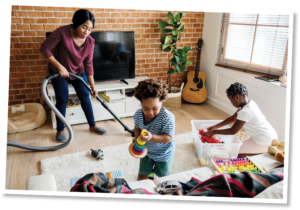
Daily Message
Recycle your trash at home.
- Say the sentence and ask your child to repeat it.
- Say the word re-cy-cle clapping once for each syllable. Have your child repeat the word and clap.
- Repeat with the word trash.
- Write the sentence as your child recalls each word. Write the letters h and y.
- Have your child circle these letters in the sentence.
Build the Letter
Focus Letters: Hh, Xx, Yy
Write each focus letter on a note card. Say the letter names for your child and trace the letters with your finger. Have your child say the letter names and “draw” the letters in the air. Ask: What could we use to make these letters? Have your child build letters using household or craft items (play dough, yarn, shoestring).
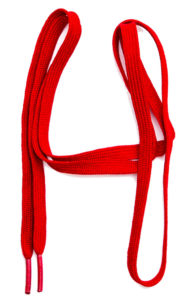
Go, Slow Stop
Have your child help you make three signs (green, yellow, and red) with the words “Go,” “Slow,” and “Stop.” Show the signs and read them with your child. Together think of an action for each sign: Go (march quickly), Slow (march slowly), Stop (freeze). Have your child do the actions when you hold up the signs. Click image for sign directions.
Storytime
Read Abuela. Remind your child that Abuela and Rosalba were flying over a city. Talk about the relatives that were named in the story and the jobs they did. Abuela’s cousin (Daniel) loads and unloads cargo from ships. Aunt Elisa and Uncle Pablo work in a store. Father works in an office.
Keypad Design
Gather 12 stick-on notes. Write one numeral (0-9) on 10 of the notes. Make the # and * sign on the 2 other notes. Place the notes randomly in a row, not in numerical order. Show your child the keypad on your cell phone. Invite your child to arrange the stick-on notes on the wall to copy the keypad display.
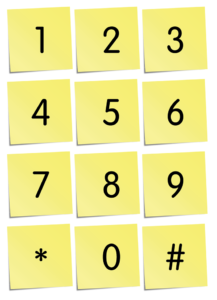
Stop, Drop, Roll
Supervise carefully as your child watches. Light a candle. Place a clear glass cup over the candle. The flame goes out as the oxygen inside is used. Without oxygen, fire cannot burn. Say: I will teach you a way to put the fire out if your clothes were to catch on fire. Demonstrate “Stop, Drop, Roll.” Have your child practice. Explain that rolling on the ground puts the fire out.

Bake Cookies
Bake cookies for firefighters at the local fire station or your mail carrier. Work with your child to choose a kind of cookie that the community workers might like best. Organize the cookie ingredients. Have your child make a thank-you card to go with the cookies. Deliver the special treat.
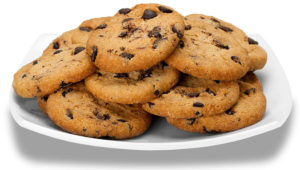
Safe, Healthy, Helpful Me
Week 2: Kind and Helpful Me
This week you will focus on helping your child be kind and helpful. You and your child will notice how a kind act can make a difference. You will practice passing kindness on to others.
Word of the Week: compassion
Before You Begin
Watch these videos to better understand the concepts your child will be learning this week. These are not videos you will watch with your child. These are just for you!

Books to Read
- A Walk in the Neighborhood eBook
- Pass It On eBook
- Pass It On Read-Aloud video
- Silly Stew eBook
Supplies to Gather
- ball or beanbag
- bird donuts: gelatin, birdseed, nonstick spray, straws, muffin tins, plastic knife, string
- bowl
- broom and dustpan, mop
- bucket
- coat, gloves or mittens
- dominoes
- eyedropper or baster
- fruit salad: apple, banana, grapes, yogurt, cup, spoon
- lightweight objects such as plastic balls
- lotion
- note cards
- notepad
- paper
- pencils, markers, crayons
- sponge
- spray water bottle
- three spoons: plastic, wooden, stainless steel
- towel
- umbrella
- wipers (brush, cloth, sponge, paper towel)
Encouraging Words
Tell your child that this week you will learn about passing kindness on to others. Be detectives! Look for ways to do something kind or to be helpful. Say: One way to be kind is to say encouraging words, such as “Way to go!”Listen to the song “Encouraging Words” to learn more ways to help others. Click image for lyrics.
Daily Message
We always take turns kicking the ball.
- Say the sentence. Have your child repeat the sentence.
- Say the word kick-ing clapping once for each syllable.
- Have your child say the word and clap with you. Ask: How many syllables did you clap?
- Repeat with the word al-ways.
Sparkle
Enjoy watching the music video “Sparkle” by Don Monopoli. Join Don’s hand motions as he sings. Ask: Why do you think sharing your sparkle is important? How can you share kind words and helping hands today?
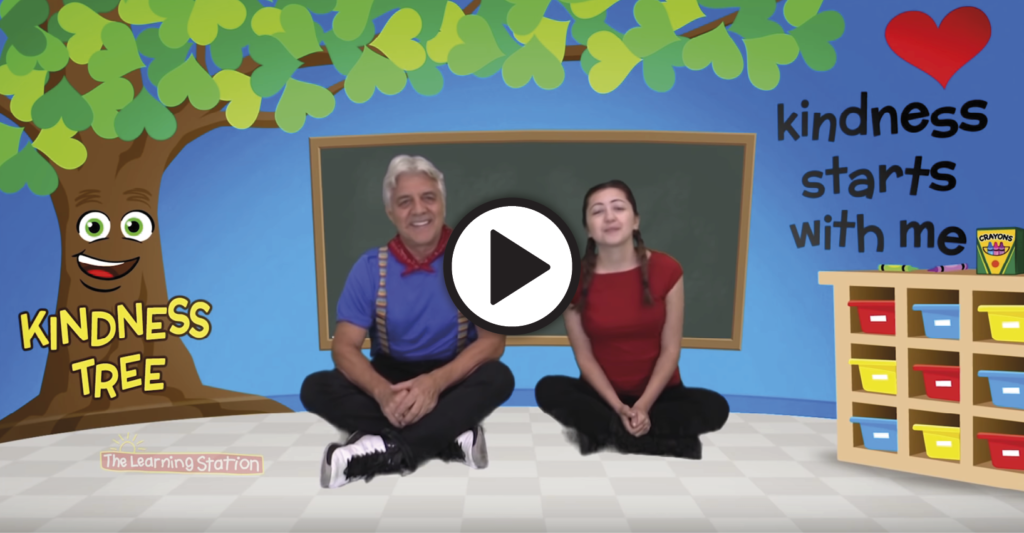
Storytime
Today’s story is about a chain reaction caused by one act of kindness. Kindness is passed from one person to another person to another person. Watch the read-aloud video Pass it On to see how this happens.
Fill a Bucket
Go outside with your child looking for items that fit in a bucket. Fill the bucket and then empty it. Fill it several times using different-sized items. Say: I notice if we use __________ to fill the bucket, it takes fewer than when we use __________ . Compare the size of the items and the number needed to fill the bucket.
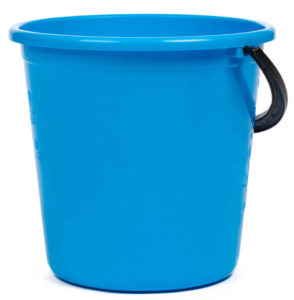
Button and Zip
Work with your child or have siblings work together. Take turns helping each other zip or button a coat and put on gloves or mittens. Ask: How is it easier to get dressed for outdoors when someone helps? Is it easier to put on mittens or gloves? Why?
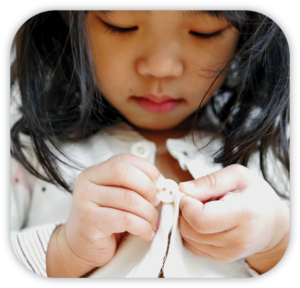
Pass the Lotion
Gather family members. Explain that you are going to practice using kind touches as you pass a dab of lotion from one person to another. The goal is to have the lotion make it all the way back to you. Put a generous dab on your index finger. Pass it to the index finger of the nearest family member. Celebrate together when the lotion returns to you.
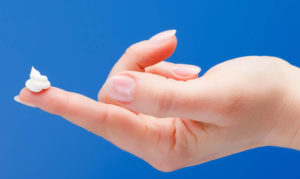
Daily Message
Tanisha spilled juice on her new dress.
- Say the sentence and ask your child to repeat it.
- Say the word Ta-ni-sha clapping once for each syllable. Have your child say the word and clap with you. Ask: How many syllables did you clap?
- Repeat with the word juice.
- Ask your child to delete a syllable from a name. For example, say: What is Tanisha without /Ta/? (nisha)
Blend and Separate
Play a word game to blend syllables. Say kind-ness pausing between syllables. Have your child guess the word. Repeat with com-pas-sion and sto-ry. Next, have your child delete a syllable. Say: What is purple without /pur/? (ple) Continue saying a word (Fan-ny, Li-ly, dom-i-noes) and deleting the first syllable. Have your child say the rest of the word.
kind + ness = kindness
purple – pur = ple
Be Yourself
Watch the music video “Be, Be, Be, Be Yourself.” March and sing along with Ronno and his young friends. Ask: What is it about this music that makes your feet want to march when you hear it?
Storytime
Read Silly Stew. This book is about following a recipe. A recipe tells how to make something. Ask: Do you think that you would like to eat the stew in the book? Why or why not? Point out that numerals, tally marks, pictures, and words help the cook know how much of each ingredient to add to the stew.
Splashes or Ripples?
At bath time, have your child splash in the water. Ask: What’s the difference between a splash and a ripple? Show an example of both. Give your child plastic balls or other lightweight items to drop into the water. Ask: Do these objects create a ripple or a splash? What happens when you gently place the toy in the water instead of dropping it?
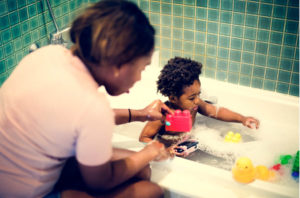
Wash a Window
Have your child help you clean a window or shower door with a water bottle that has a spray attachment and different “wipers,” such as a brush, cloth, sponge and paper towel. Compare how each wiper works on the glass. Ask: Which is best for removing dirt? Polishing the window? Which does or does not leave a streak? Why?
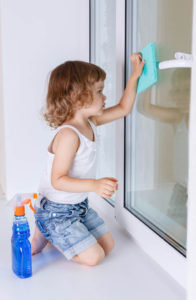
Pass It
Pass a ball or beanbag back and forth with your child. Count each pass. See how many times you can pass it back and forth before a miss. As you become more successful at passing, increase the distance between the two of you. Ask: When have you seen players pass a ball? (football, soccer, basketball, field hockey, rugby)
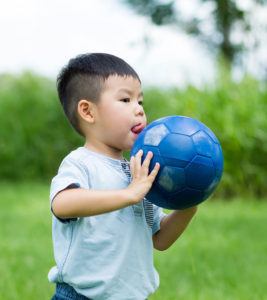
Show Kindness
Do something nice for a neighbor, friend, or relative. Have your child help. You might rake leaves or clear a sidewalk after a snowstorm. You might pick some flowers growing in your yard and deliver them to a friend. Talk about the good deed and how it makes you feel.

Daily Message
Mrs. Jackson will park the bus.
- Say the sentence and ask your child to repeat it.
- Say the word Jack-son clapping once for each syllable. Have your child repeat the word and clap with you. Ask: How many syllables did you clap?
- Repeat with the word park.
- Ask your child to delete a syllable from a name. For example, say: What is Jackson without Jack? (son)
Writing Together
Say: Sometimes birds cannot find food in the cold winter months. Talk with your child about where birds might look to find food around your neighborhood. List your child’s suggestions on paper. Read the list together. Decide on a place to leave a special treat for birds. Click image for Bird Donut recipe.
Fill Your Bucket
Watch the music video “Fill Your Bucket.” Ask: What do you think it means to fill your bucket? What helpful acts do you think would fill your bucket? Sing and dance along with Don Monopoli.
Storytime
Show the cover of A Walk in the Neighborhood. Read the title to your child and ask: What do you think this story will be about? When you finish reading, ask: What are some of the ways Carlos showed kindness on his walk? What are some ways you could show kindness?
Tally Marks
Turn to pages 14-15 in Silly Stew. Ask your child to point to and count each zucchini. Make a tally (straight line) for the first four zucchinis. As your child counts the fifth zucchini, cross the four straight lines with a diagonal line. Say: These tally marks show 5. Point out that your tally marks match the tally marks on page 14.
Wood and Water
Place a plastic, wooden and stainless-steel spoon in water. Have your child remove the spoons and dry each one off with a towel. Compare the surfaces of the spoons. Ask: Which spoon is still damp (feels wet)? Say: Steel and plastic resist water. Wood absorbs water (soaks it up).
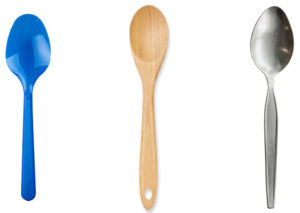
Kindness Spreads
Point out that kindness can be spread. You do something kind for someone and then that person does something kind for someone else. Kindness spreads like ripples in water. Fill a bowl with water and use an eyedropper or baster to drip drops of water into the tub. Point out that ripples start close to where the droplet hits the water and move outward in circles.
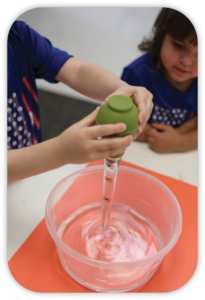
Drain
Review the actions for the Drain calming strategy that you and your child learned last week. Ask: What stress would you like to wash down the drain? Practice the strategy together.
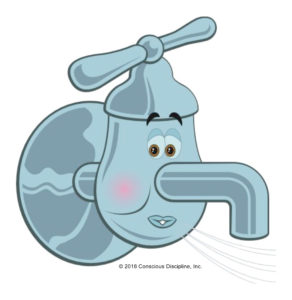
Daily Message
Helping people is always joyful.
- Say the sentence and ask your child to repeat it.
- Say the word joy-ful clapping once for each syllable. Have your child repeat the word and clap with you. Ask: How many syllables did you clap?
- Repeat with the word help-ing.
- Ask your child to delete a syllable from a word. For example, say: What is always without /al/? (ways)
Feed the Birds
Use a plastic knife to loosen the Bird Donuts you made yesterday from the pan. Remove the straw from each “donut.” Have your child tie a string through each hole. Hang the treats where the birds will be able to find them. Have your child use the next journal page to illustrate and label the donut locations. Check the donuts later to see if birds found them.
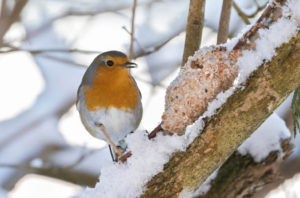
Tony Chestnut
Listen to and act out “Tony Chestnut,” the silly song that you first viewed in Theme 1. Ask: What body part is a “nut”? Have you ever called your head a nut? How are nuts and heads alike? Enjoy speeding up the motions at the end of the song.
Storytime
Watch the read-aloud video Pass It On with your child. After watching, practice the hand signs for please and thank you. Ask: When could you use one of these hand signs? Make a point of noticing when your child uses a sign during the day.
Sponge Tally Count
Fill the plugged sink with 1 inch of water. Have your child soak up the water with a sponge and wring it out inside a bowl. Make a tally mark on paper each time your child wrings out the sponge. When the sink is empty, count the tally marks. Write a numeral to show how many wrings of water it took to empty the sink.
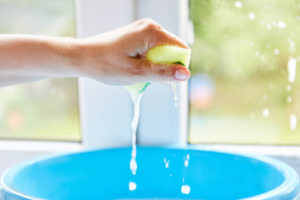
Button Up
Have your child help you button shirts before you fold and put them away. Show your child how to align each button to a matching hole. Remind your child to start at the top and go down, counting each button. Point out that the number of buttons and holes are the same.
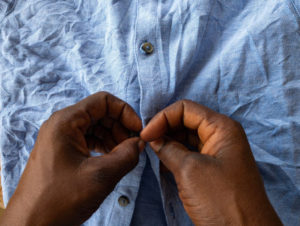
Chain Reaction
Show how to create a chain reaction with dominoes (or rectangular blocks). Line up ten or twelve dominoes in a straight line. Tap the first domino to cause each domino to fall. Have your child experiment creating this chain reaction. Ask: Does the chain reaction go faster or slower when the distance between the dominoes is changed?
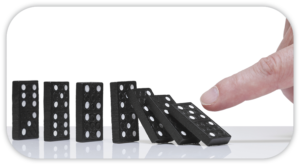
Daily Message
We learned about kindness this week.
- Say the sentence and ask your child to repeat it.
- Say the word kind-ness clapping once for each syllable. Have your child repeat the word and clap with you. Ask: How many syllables did you clap?
- Repeat with the word a-bout.
- Ask your child to delete a syllable from a word. For example, say: What is about without /a/? (bout)
Build the Letters
Focus Letters: Jj, Kk, Ww
Write each focus letter on a note card. Say the letter names for your child and trace the letters with your finger. Have your child say the letter names and “draw” the letters in the air. Ask: What could we use to make these letters? Have your child build letters using natural materials (sticks, rocks, sand).
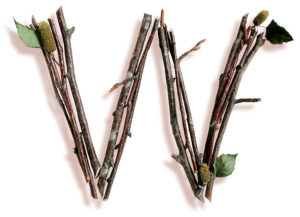
Lovingkindness
Enjoy following Charity Kahn’s actions as you sing along to “Lovingkindness.” Ask: What actions or feelings might be described by the word lovingkindness? Think of ways you can show your love to others.
Storytime
Read A Walk in the Neighborhood with your child. Ask: What opportunities do you think you would have to be kind in our neighborhood? After talking about ideas, take a walk with your child. See if there are any chances to show kindness. Think about what happened after you return.
Silly Stew Recipe
Help your child write a new recipe for silly stew. Go outdoors to collect “ingredients,” such as sticks and stones. Have your child use markers and paper to make tally marks, pictures and numerals to show how many pieces of each ingredient he will add to the stew. Help your child follow the recipe to make the stew by mixing the ingredients in a bucket.
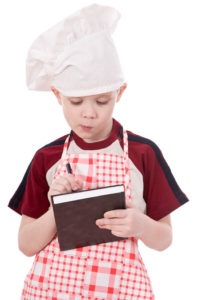
Count Crayons
Write the numerals 1-10 in a straight line on a strip of paper. This is called a number line. Have your child place each crayon (from a box of 8 crayons) below a numeral, starting at 1. Point out how the numeral where the last crayon is placed is the same as the numeral on the box. Say: The last numeral tells how many.
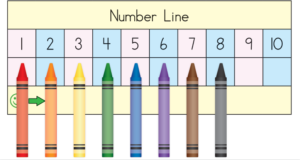
Helpful Umbrella
Open up an umbrella. Have your child squirt water on the umbrella using a water bottle or drop water on it with an eyedropper. Have your child observe the droplets that form. Explain that umbrellas are made with material that repels (keeps it from soaking up) water so that rain will not go through and get people wet.
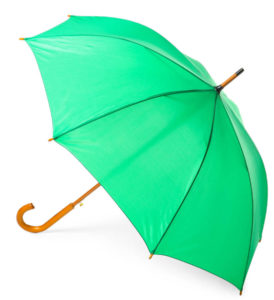
Water the Plants
Explain to your child that plants will grow when they are cared for (shown kindness). Ask: What are some ways to be kind to plants around the house? (making sure they are placed in sunlight, watering them) Have your child use a spray bottle or watering can to show kindness to the plants.
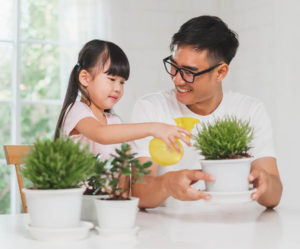
Safe, Healthy, Helpful Me
Week 3: Eating Well
This week you and your child will learn about the habit of eating well. You will practice making healthy choices about the foods you eat.
Word of the Week: nutritious
Before You Begin
Watch this video to better understand the concepts your child will be learning this week. This is not a video you will watch with your child. This is just for you!

Books to Read
- ABCs of Food eBook
- What’s for Dinner eBook
- What’s for Dinner Read-Aloud video
Supplies to Gather
- butter, slice of bread
- cereal box
- coins
- fork, spoon, table knife
- journal
- pencils, markers, crayons
- mud pies: dirt, flour, vegetable oil, small stones, shells, seed pods, flowers
- new utensil: tape, rubber bands, toothpicks, craft stick
- paper
- sand on tray
- string or yarn
- sunflower seeds and cracked corn (or two kinds of nuts in shells or small rocks and unpopped corn)
- three foods of different consistencies (soft, liquid, hard)
- tweezers or small tongs
Daily Message
Zucchini is a nutritious food.
- Say the sentence and ask your child to repeat it.
- Say the word zuc-chi-ni clapping once for each syllable. Have your child repeat the word and clap with you. Ask: How many syllables did you clap?
- Ask your child to delete a syllable from a word. For example, say: What is pretzel without /pret/? (zel) Continue with other words (/bar/-beque, /straw/-berries, /nu/-tritious).
Go Bananas!
Sing “Go Bananas” along with Don Monopoli as you watch the music video. This active echo song is a great way to teach the meaning of action words (verbs) and energize. Don’t miss the banana jokes and facts at the end of the video.
Storytime
Watch the read-aloud video What’s for Dinner? with your child. After the video, ask: If you were going to fill a plate with healthy foods, what foods would you choose? Did you choose a food from each food group?
Tour the Store
Take your child to the supermarket with you this week. As you shop, talk about how the foods are organized in sections. Point out frozen foods, produce, canned goods, baking supplies, and pasta. Say: The clerks organize the food (sort it) so that it is easier for us to find what we need.
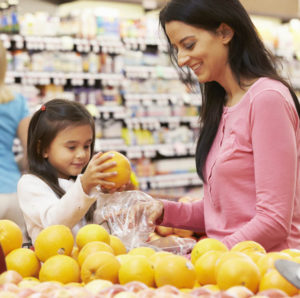
Sort Numerals
Have your child use a piece of string or yarn to make a straight line. Trace the line with your finger. Repeat for a curved line. Have fun sorting numerals by their lines. Does a numeral have straight lines, curved lines, or both? Click image to get started!
Fork Design
Invite your child to use a fork to eat three different foods, such as cheese (soft), soup (liquid), and nuts (hard). Discuss which of the foods was easiest to pick up with a fork. Ask: Why was it easy or hard to eat __________ ? How is a fork designed to help you get food to your mouth?

Make Mud Pies
Have your child create pretend food outdoors. Suggest mixing dirt, flour, and vegetable oil. This dirty dough makes a great base for adding small stones, shells, seed pods, and flowers to create pretend cookies, cupcakes, and pies. Note: Using dirt and water also works as a base for mud pies. Remind your child that these pies are pretend only. They should not be eaten.
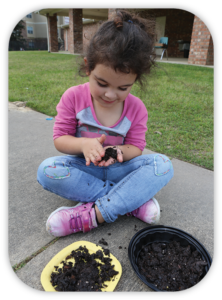
Kitchen Helper
Have your child help you make dinner. Your child can help mix cup-up pieces of fruit for a salad or help measure ingredients. As you eat together, talk about how your child helped prepare the meal: Claudia cut up the banana and mixed it into the fruit salad. That was helpful.
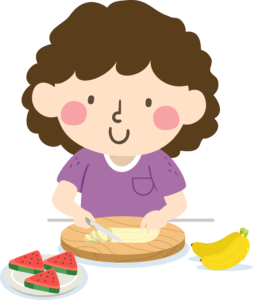
Daily Message
Squeeze an orange to make juice.
- Say the sentence and ask your child to repeat it.
- Say the word squeeze clapping once. Have your child repeat the word and clap with you. Ask: How many syllables did you clap?
- Ask your child to delete a syllable from a word. Say: What is chili without /chil/? (i) Continue with other words (/noo/-dle, /to/-mato, /bar/-ley).
Name Chant
Teach your child this name chant. Use it to practice dividing family member names into syllables. After each name, ask: How many syllables did you clap?
Name, name, what’s your name?
I’ve got a name,
And you’ve got a name.
What’s your name?
So – phi – a
(clap once for each syllable)
Sophia
Storytime
Explain that ABCs of Food is an alphabet book. Each page shows a food that begins with one letter from A to Z. Turn the pages and focus only on the alphabet letters and the food named on each page. Do not read the descriptions. When you finish ask: What was the food that started with the same letter as your name?
Sort Groceries
Invite your child to help you unpack a bag of groceries. Explain that each item has a place it is stored. Sorting and storing foods by categories helps us find them. As you unpack, ask your child to help you sort foods by where you store them. Ask: What things go in the refrigerator? Why do they belong there? Where do the cans and cereal boxes go?
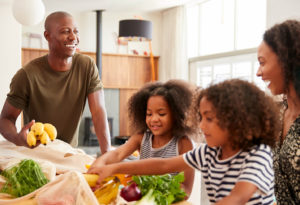
What Doesn’t Belong?
Invite your child to play the game “What Doesn’t Belong?” You will show your child a group of four things that are similar. However, there is one item in the group that doesn’t belong. Your child will pick out that item and explain why it doesn’t belong. Click image to get started!
Spoon Design
Have your child compare a spoon and a fork. Ask: How are they alike and different? Point out the bowl on the spoon and the prongs (tines) on the fork. Ask: Which foods can you only eat with a spoon? Why? What would happen if you tried to eat cereal and milk with a fork?

Healthy Diet
A healthy diet means eating food from each of the five food groups each day: fruits, grains, vegetables, dairy, protein. Help your child identify the foods from each food group on the plate as you eat meals. Encourage your child to choose a variety of foods from each group during the day. Click image to enlarge poster.
Daily Message
Quick breads may have fruit or vegetables.
- Say the sentence and ask your child to repeat it.
- Say the word veg-e-ta-bles clapping once for each syllable. Have your child repeat the word and clap with you. Ask: How many syllables did you clap?
- Ask your child to delete a syllable from a word. Say: What is dinner without /din/? (ner) Continue with other words (/sup/-per, /pic/-nic, /res/-taurant).
Writing Together
Draw a circle on paper to represent a plate. Divide the “plate” into four sections for fruits, grains, vegetables and protein. Add a circle to the side for dairy. Have your child plan a meal by choosing a food for each section. Write the name of the foods and draw simple pictures. Have your child tell about the healthy meal. Click image for food choices.
Storytime
Turn to page 7 in ABCs of Food. Read about fruits. Name the fruits you see. Turn to page 23. Read about vegetables. Name the vegetables you see. Turn to page 28. Say: An index at the back of a book tells readers where they can find information. Point to the categories for fruits and vegetables. Choose a few pages and read them.
What’s My Rule?
Show your child some coins. Remove a few pennies. Point to the pennies. Ask: Why do these coins go together. What is my sorting rule? If your child does not notice, explain that the coins are pennies (brown). Invite your child to think of a new rule and sort the rest of the collection (color, size, type of coin).
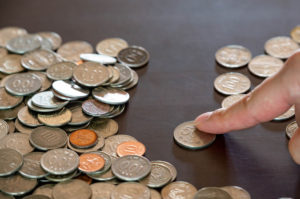
Knife Design
Show your child a table knife. Remind him to be careful with the knife and to never play with knives of any kind. Compare the knife to a spoon and fork. Talk about the flat sides and the serrated (saw-like) edges. Ask: What is the knife used for? Invite your child to use the knife to spread butter on a slice of bread.
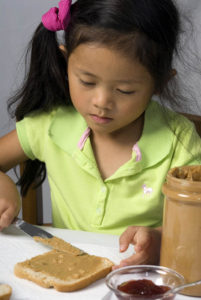
Where Does It Go?
Before the activity, remove a few food cans and cereal boxes from your cupboard. Have your child look at the food. Ask: Can you help me put the food back in the cupboard? Let’s put all the cans together and all the cereal boxes together. Have your child notice what food items look alike and group them together.
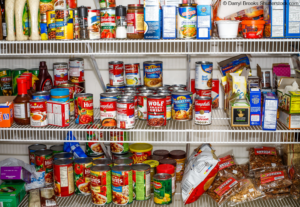
Healthy Breakfast
Remind your child that eating healthy foods in the morning gives you energy to play, learn, and have fun. Sing or say this chant with your child.
What did you eat for breakfast,
For breakfast, for breakfast?
What did you eat for breakfast,
For your energy today?
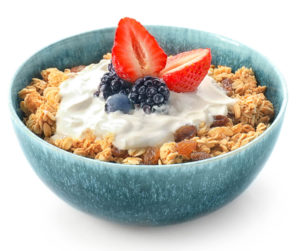
Daily Message
Gazpacho and sushi come from other countries.
- Say the sentence and ask your child to repeat it.
- Say the word gaz-pa-cho clapping once for each syllable. Have your child say the word and clap with you. Ask: How many syllables did you clap?
- Ask your child to delete a syllable from a word. Say: What is country without /coun/? (try) Continue with other words (/spi/-cy, /de/-licious, /bit/-ter).
My Journal
Say: Draw a healthy meal in your journal. Assist your child in finding the first blank page in the journal. Help label the drawings if your child asks. Take time to discuss the healthy food choices. Ask: Would you eat everything that you have drawn on this plate?
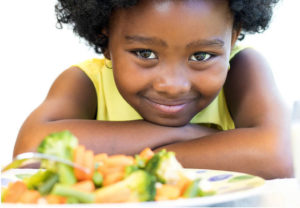
Green Peas
Listen to the silly musical story “Green Peas” told by Joe Scruggs. Have your child tell about what happens. You may need to prompt with questions, such as: What happened when peas spilled off the plate? Why would the peas roll into Dad’s lap? Listen again and laugh as you imagine the dinnertime problems. Click image for lyrics.
Storytime
Watch the read-aloud video What’s for Dinner with your child. Ask: Who do you think was able to help the foods see that they were all important to Sara? (the milk) Why do you think the storyteller called the glass of milk wise?
New Sorting Rule
Have your child run his finger around the edges of different coins. Notice that some coins have smooth edges (penny, nickel) and some have edges with ridges (quarter, dime). Invite your child to sort the coins into two groups: smooth edges, not smooth edges. Then invite your child to sort the coins another way. Ask: What is your sorting rule?

Design a Utensil
Challenge your child to draw a plan to use tape, rubber bands, toothpicks, and a craft stick to make an “all-in-one” eating utensil. Help think of ways to put the items together. Ask: How will you make a utensil that picks up food, spreads butter, and slices bread?
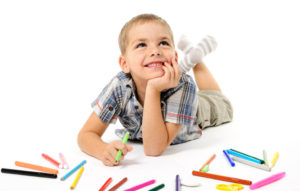
Reading the Box
Show your child a cereal box. Explain that every food in a box or can has a label that tells what ingredients are in it. Read the label on the cereal box. Notice how much sugar is in each serving. Remind your child that sugar is not nutritious. Compare several cereals to see which one has the least amount of sugar.
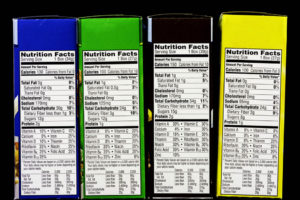
Daily Message
Pretzels and quick breads are grains.
- Say the sentence and ask your child to repeat it.
- Say the word pret-zels clapping once for each syllable. Have your child repeat the word and clap with you. Ask: How many syllables did you clap?
- Ask your child to delete a syllable from a word. Say: What is power without /pow/? (er) Continue with other words.
Trace the Letters
Focus Letters: Qq, Uu, Zz
Write the focus letters for the week on textured paper (corrugated cardboard, sandpaper). Say the letter names for your child and trace the letters with your finger. Have your child say the letter names and trace the letters. Pour a bit of sand on a tray. Have your child draw the letters with a finger in the sand or move the sand to form the letters.
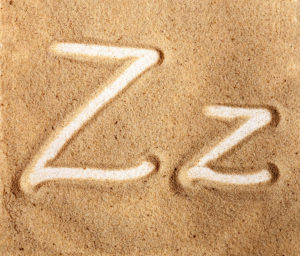
Popcorn Song
Watch and follow the video instructions for actions for the “Popcorn Song.” You and your child will have a chance to become popcorn kernels. Then use the actions as you listen to the complete song using the music link. Click image for lyrics.
Storytime
Read ABCs of Food. After reading, say: Foods belong to food groups, but some foods belong to more than one group. Show page 9 in the book (hamburger). Have your child name the parts (foods) in a hamburger and their food group.
Make Up a Rule
Take out the coins you sorted earlier this week. Have your child look more closely at the coins to find new likenesses and differences. Challenge your child to name a new rule and sort the coins by that rule. For example, coins could be sorted into groups of “shiny” and “not shiny” or “building” and “no building.”
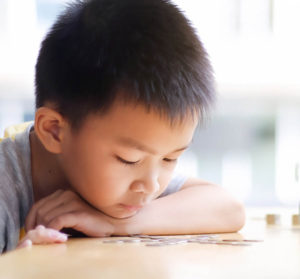
Follow the Plan
Give your child the chance to build the “all-in-one” eating utensil she planned yesterday. Ask: How will you put the materials together? Do you need more supplies? Help your child build the utensil. Encourage your child to tell about the planning and share her utensil with other family members.
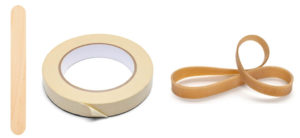
Sorting with Tweezers
Give your child a pair of tweezers or small tongs to sort sunflower seeds and cracked corn (substitute two nuts in shells like almonds and pecans or small rocks and popcorn). Say: Sort the seeds into two piles. Once the seeds are sorted, ask: Which seed was easier to pick up with the tweezers?

Safe, Healthy, Helpful Me
Week 4: Active Me
This week, encourage your child to be active and exercise to be healthy and fit. Being active helps children develop their muscles and practice balance and coordination.
Word of the Week: exercise
Before You Begin
Watch this video to better understand the concepts your child will be learning this week. This is not a video you will watch with your child. This is just for you!

Books to Read
- Get Moving eBook
- Get Moving Read-Aloud video
- Let’s Get in Shape eBook
Supplies to Gather
- balls (many kinds)
- journal
- masking tape or string
- paper
- paper plates
- pencils, markers, crayons
- penny
- red and blue paper squares
- row-boat play: sheet, blocks and boxes, long cardboard tube
- small objects for patterns: coins, toothpicks, buttons
- small stuffed animal
- stick-on notes
Exercise Your Brain
Tell your child that physical exercise (running, jumping, playing) is good for our brain! It gets blood pumping and sends oxygen to the brain so we can think. Have your child feel her heartbeat. Then sing “It’s Brain Smart Time.” Feel your heartbeat again. Ask: How did your heartbeat change? Click image for lyrics.
Daily Message
Dancing is very good exercise.
- Say the word ex-er-cise clapping the syllables with your child.
- Ask your child to delete a syllable from a word. Ask: What is exercise without the /ex/?
- Say the sentence. Have your child recall each word as you write it. Point out the space between words and the uppercase letter beginning the first word.
- Read the complete sentence with your child tracking the words.
Jump and Bend
Join Don Monopoli in “Jump Up, Bend Down.” Imagine that you and your child are part of the music video. Remind your child that you wake up your brain when you enjoy the action and dance.
Storytime
The story today highlights fun ways for children to be active and get exercise. Watch the read-aloud video Get Moving with your child. As you listen, encourage your child to repeat the phrase “Get moving!” when prompted.
Walk a Pattern
Attach a red paper square to your child’s left foot and a blue square to the right foot. Invite your child to walk forward six steps and say the alternating colors he sees while moving: red, blue; red, blue; red, blue. Say: A pattern is a sequence of motions, pictures, or objects that repeats the same way every time. Your steps are a pattern.
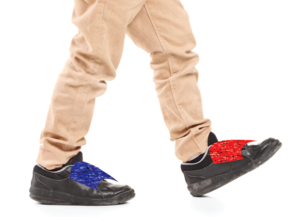
Tiger Moves
Show the cover of Let’s Get in Shape. Ask: Can tigers dance? Why or why not? Remind your child that characters in books are sometimes make-believe. Have your child get down on all fours and move like a tiger. Have your child repeat a series of tiger moves in a pattern. For example, creep forward, pounce, creep backward.
Games with Balls
Talk with your child about different types of games and activities that use balls (kickball, football, soccer, baseball, basketball). Ask: What do people do with the ball when they play the game? What are different things you can do with a ball? Have your child use a ball to show his ideas.
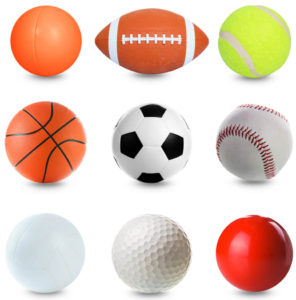
Row a Boat
Place a sheet or blanket on the floor to be a “river.” Help your child build a rowboat out of blocks and boxes and sit inside. A long cardboard tube can become a paddle. Sing or clap as your child paddles across the river. Have a sibling ride along. Ask: If you had a sail on your boat, would you need a paddle?
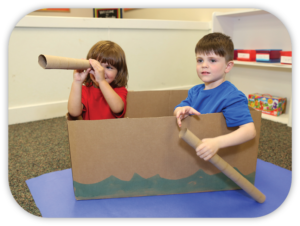
Walk and Stop
Chant the poem “Walk and Stop” as your child follows the directions. This stop-and-go activity will wake-up the part of the brain that helps your child control his actions. Your child will also need to listen carefully for the word “stop” when doing each action. Click image to get started.
Daily Message
I like to move with the music.
- Say the word mu-sic clapping the syllables with your child.
- Ask your child to delete a syllable from a word. Ask: What is music without /mu/?
- Say the sentence. Have your child recall each word as you write it. Point out the space between words and the uppercase letter beginning the first word.
- Read the complete sentence with your child tracking the words.
Blend Syllables
Play the Mystery Word Game with your child to practice blending syllables. Say ex-er-cise pausing between syllables. Repeat. Have your child guess the word. Repeat the game with other familiar words such as mu-sic and dan-cing.
ex-er-cise
mu-sic
danc-ing
Storytime
Look at the cover Let’s Get in Shape. Ask: What do you think the tigers are doing? Read the book to learn about the tiger family, their problem, and how they solved it. On pages 14-15 the whole family is at a cardio-dance class. Ask: What will you do to get in shape?
Heartbeat Pattern
Have your child run fast in place for one minute and then feel her heartbeat. Ask: What is your heart doing? Explain that when the heart beats, it is relaxing and squeezing to pump blood to the body. Have your child demonstrate a heartbeat pattern by squeezing and relaxing her fist four times. Say the pattern together: squeeze, relax; squeeze, relax…
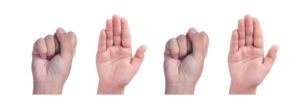
Pattern Hunt
Remind your child that a pattern is a sequence of motions, pictures, or objects that repeats. Walk with your child outdoors and look for designs that follow a pattern, such as bricks on houses and walkways. Listen for sounds that repeat in a sequence such as bird calls, construction machinery noises, or car horns.
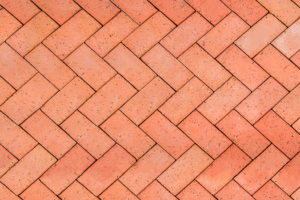
Bounce It!
Have your child drop a ball that bounces. Draw an “up” and “down” arrow to represent the sequence of movements the ball makes when your child lets go. Ask your child to make two more up and down arrow sequences. Circle the first pair of up and down arrows. Say: This is the pattern core, the part of the pattern that repeats.

Take a Walk
Take your child on a walk in a local park. Even a walk around the neighborhood is good exercise. If you take the same route once a week, you will begin to notice changes. The changes may be because of the weather or construction. Noticing what is happening around you as you walk helps your child develop important observational skills.

I Can Dance
Watch the music video “I Can Dance” with your child. Ask: Is sitting still hard for you to do? How does getting up and dancing with your arms in the air help you focus when you sit back down? Talk about how the two of you do some “sitting still” and some “exercising” during your learning time. Click image for lyrics.
Daily Message
Will you jive with me?
- Say the sentence. Have your child recall each word as you write it. Point out the question mark at the end.
- Explain that jive means dance. Write your child’s answer to the question in a full sentence.
- Read the sentences with your child tracking the words.
- Write the letters i and v under the sentences. Have your child find and circle these letters in the sentences.
Writing Together
Remind your child about the tiger family in Let’s Get in Shape! Ask: What were the tigers doing at the beginning? How did they change by the end? Draw a line across a paper. Recall the story events in order and write them (or draw pictures) along the line to create a timeline of the story.
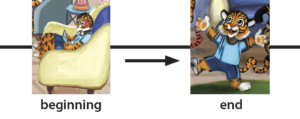
Storytime
Read Get Moving. As you move through the pages, notice other characters that move with the child. For example, on page 3, a puppy is running with the girl. As you look at the final illustrations on page 16, ask: Who runs, plays, and does exercises with you? Do you like being active by yourself or with others? Why?
Penny Toss
Have your child toss a penny ten times. Record each toss in a straight line using red or yellow dots. If the coin lands on heads, make a red dot. If the coin lands on tails, make a yellow dot. Ask: Does the line of dots follow a pattern? (It probably will not.) How do you know? Explain that not every series of movements makes a pattern.

Copy a Pattern
Invite your child to find an object in your house that has a pattern of two colors, such as a strip of wallpaper, a candy cane, a striped shirt or sock. Ask your child to point to each stripe and say the sequence of colors. Challenge your child to use markers of the same colors to copy the pattern on paper.

Ball Experiment
Gather a variety of balls that bounce and do not bounce (marble, football, baseball). Choose a place where “wild bounces” won’t cause damage. Invite your child to drop one ball a time. Ask: Why does the ball bounce? Not bounce? Have your child feel and squeeze each ball to see if it is filled with air and what it is made of.
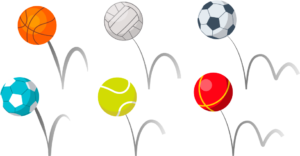
Jump the Puddles
Create a 12-foot path using masking tape or string. Place paper plates two to three feet apart along the path as “puddles.” Have your child walk on the path and jump over the puddles along the way. Move the plates to create different distances between puddles. Ask: Did you make it over the puddles? Is it easier when you walk slowly or quickly?
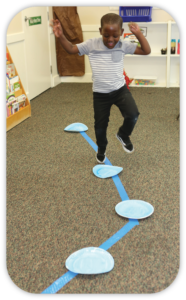
Eyes on the Speaker
Our bodies like to move. But sometimes, if your child is moving around when you are giving directions, he might miss something important. One way to solve this problem is by talking about “Eyes on the Speaker.” Say: When an adult or teacher is talking, you should keep your eyes on the person. Have your child practice looking at you as you speak.
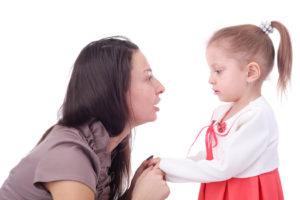
Daily Message
Running shoes will help me move.
- Say the word run-ning clapping the syllables with your child.
- Ask your child to delete a syllable from a word. Ask: What is running without /run/?
- Say the sentence. Have your child recall each word as you write it. Read the complete sentence with your child tracking the words.
- Write the letters i and v under the sentence. Have your child find the letters in the sentence.
My Journal
Have your child do a favorite dance. Talk about the order of the moves, such as: turn around, tap your foot, jump in the air. Draw the sequence on paper using symbols or simple illustrations. Do the dance sequence together. Have your child draw a new sequence of dance moves in her journal. Label the moves together.
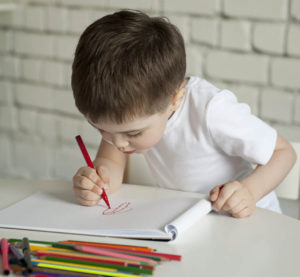
Storytime
Watch the read-aloud video Get Moving with your child. Ask: Why is it important to get moving? Have your child name some ways to be active. Ask: Did you think of ways to move that were not in the story? What ways do you think would be best for our family? Why?
Invent a Game
Work with your child to invent a new game using a favorite ball. Ask: Should our game have catching, throwing, hiding or rolling a ball? Will we need other materials? How many people can play at one time? Once you and your child have decided on the game, invite other family members to play it too.
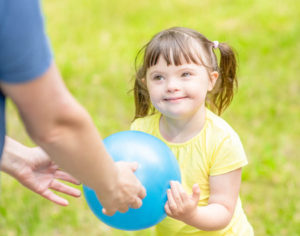
Hopping Pattern
Write numerals 1-10 on separate stick-on notes. Help your child arrange the note numerals in a hopscotch pattern. Have your child use a small stuffed animal to hop the pattern. Say the pattern as the toy jumps (one-foot hop, one-foot hop, two-feet hop).

Copy My Moves
As you walk short distances with your child, such as to your car or to a bus stop, repeat a sequence of steps or moves that follow a pattern. Say the moves aloud (hop-hop-stop, hop-hop-stop, hop-hop-stop.) Ask your child to think of a new movement pattern on the return trip.
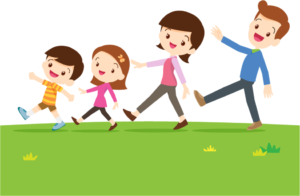
Daily Message
I challenged myself to jump off of the diving board.
- Say the word my-self. Have your child delete a syllable from the word. Ask: What is myself without /self/? Repeat with /di/-ving.
- Say the sentence. Have your child recall each word as you write it.
- Read the complete sentence with your child tracking the words.
- Write the letters I, i and v under the sentence. Have your child find the letters in the sentence.
Look at Letters
Write the letters I, i, V, v. Trace the letter shapes with your finger as you say the letter formation strokes.
I—Pull down, slide across, slide across
i—Pull down, dot
V—Slant down, slant down
v—Slant down, slant down
Have your child draw the letters in the air as you repeat the strokes. Click image sing the “The Alphabet Song.”
Storytime
Remind your child about the two books that you read this week: Get Moving! and Let’s Get in Shape. Ask: What did the characters in these two stories encourage us to do (exercise, be active, play, move). Have your child think of ways that the characters in the two books were alike and different.
Create a Pattern
Invite your child to create a pattern from two types of available materials (coins, toothpicks, buttons). Guide your child as necessary to plan the pattern core. Ask: What will come first, last? Will you need more coins? How many times will the core repeat?

Let’s Play Ball!
Invite your child to show you how to play the game she invented using a ball and other materials yesterday. Ask questions: How do you play the game? What are the rules? How many people do you need to play the game? Have family members play the game.

Active and Passive
Tell your child that some activities are active (we move around to do them) and some are passive (we sit while we do them). We need a balance of both activities every day. Our bodies need to be active to stay healthy and strong. Passive activities help us relax. Plan your weekend. Choose several activities for active fun and some passive rest breaks.
